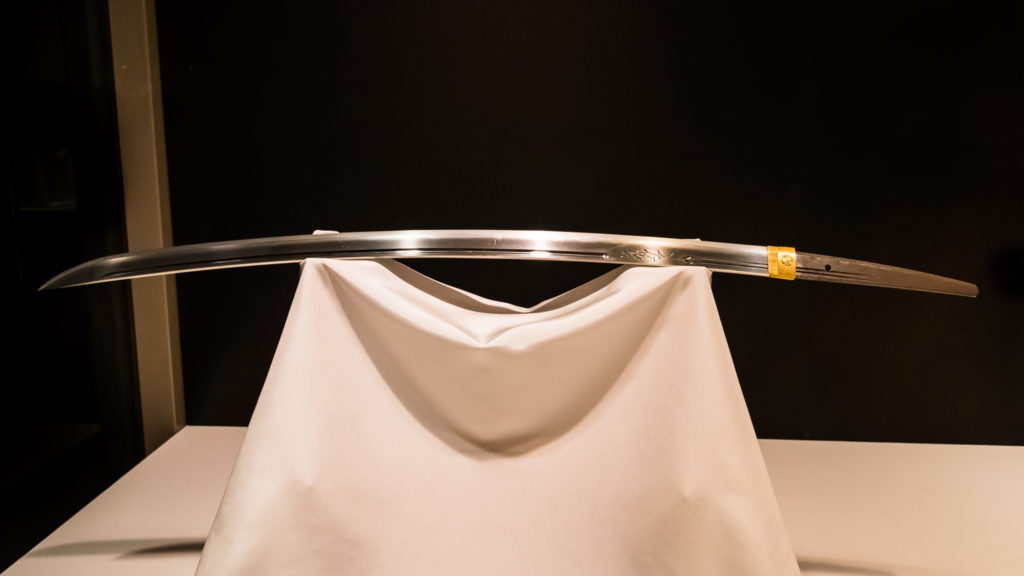
The katana has become one of the most famous elements of Japan. It is a Japanese sword characterized by a curved, single-edged blade leading to a guard and a long grip for two hands. Although they are often considered intrinsic to Japanese culture, it took a long time for the katana to be created. The precursor of the modern katana was created in the Heian period (around 700 CE), but the term ‘katana’ itself wasn’t used until the year 1185, and the unique design of the sword took until as late as 1573 to perfect.
Historically, katana were considered works of art as well as weapons. Higher quality blades are often said to have a distinct shape, curve, length, width, top, and pattern which were examined and appreciated. The traditional process of crafting a katana required in-depth knowledge of working with metals, and it often took months or longer to create the sword. A special steel called Tamahagane was used to craft them. After the blade was forged, it would be coated with different materials and dipped in water to create the katana’s unique curve and wavy design.
One of the most famous swordsmiths in Japanese history was Goro Masamune, a swordsmith who lived between 1288 and 1328. He helped refine the forging techniques used to create the modern katana design. His blades are considered national treasures of Japan.
Masamune is often mentioned in legends alongside another well-known swordsmith, Sengo Muramasa. Muramasa was a favored swordsmith of shōgun Tokugawa Ieyasu and his vassals, known for producing high-quality blades. However, some ominous lore came to surround his work and his katanas eventually became a symbol of the anti-Tokugawa movement. As a result, Muramasa swords became regarded as cursed and were often feared by other samurai.
Japanese history is full of notable blades with distinct backstories and lore associated with them. The Onimaru Kunitsuna, for example, is a katana that is said to have been used to slay the malicious creatures known as oni. Another blade, called the Otenta-Mitsuyo, was named by the Maeda family after a swordsmith and is considered one of the five greatest Japanese swords ever made. It was passed down from shogun to shogun before eventually ending up in the hands of Toyotomi Hideyoshi as one of many gifts for unifying Japan.
In the world of Tale of Ronin, your katana represents your life. Ronin need to maintain their swords in order to stay protected, complete jobs, and retain their honor. If the opportunity to acquire a legendary katana were to present itself, would you take it?